Around the Corner
Around the Corner works with young people to understand what public space is and could be. Created in collaboration with Sanaa Asim, it was the result of a 9 month design residency at Challenge Lab.
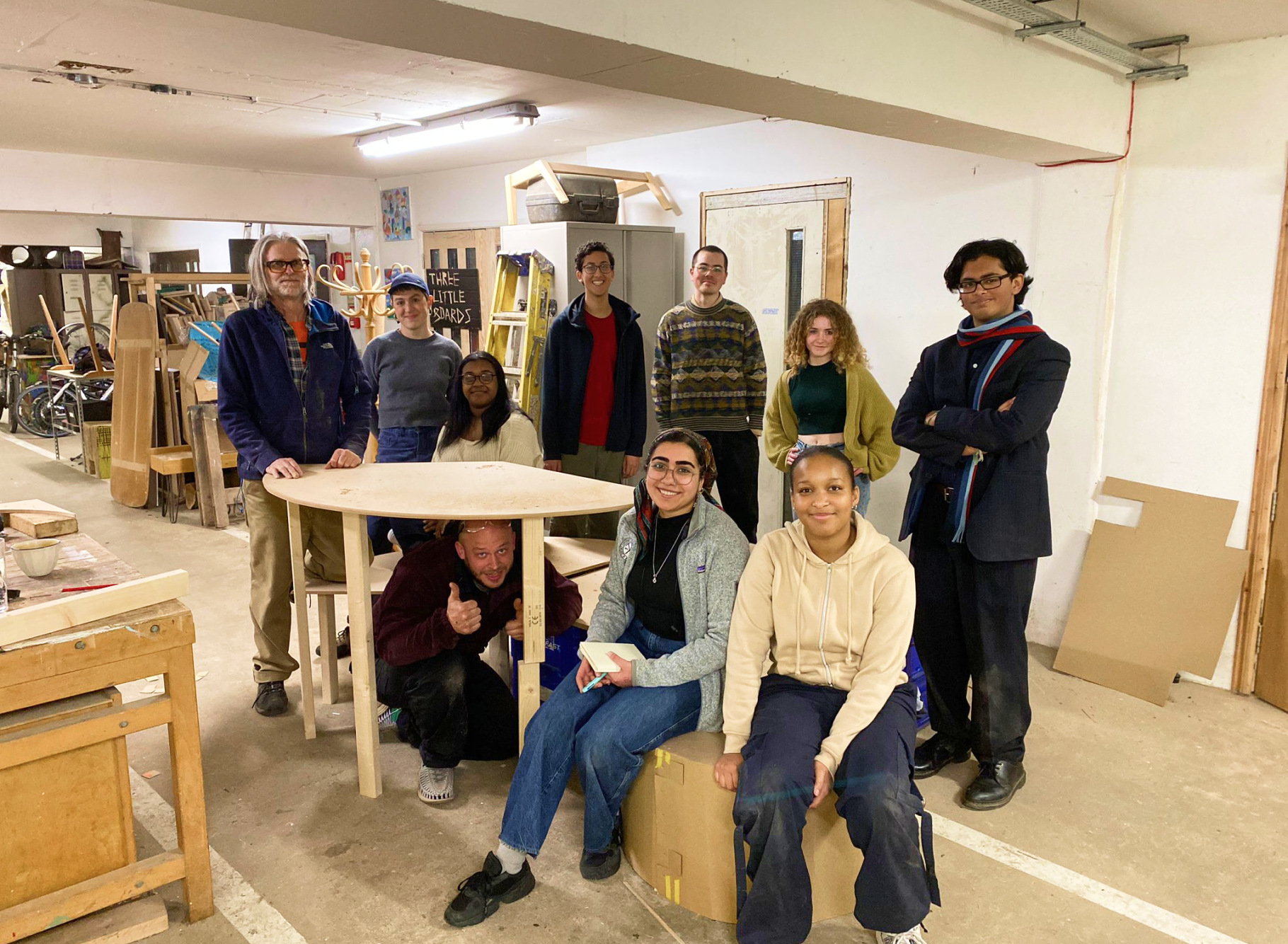
Public spaces should be for everyone. Teenagers make up one of the most frequent users of public spaces (1) - yet are rarely considered in the design and planning process. In fact, they are actively excluded from the public realm, through language, their lack of spending power and the criminalisation of their behaviour. Rather than criminalising their presence, we thought that working with young people could generate a more exciting and inclusive public realm.
(1) Clark, A. et al. (2009) ‘Learning to see: lessons from a participatory observation research project in public spaces', International Journal of Social Research Methodology, 12(4), pp. 345–360. Available at: https://doi.org/10.1080/13645570802268587.
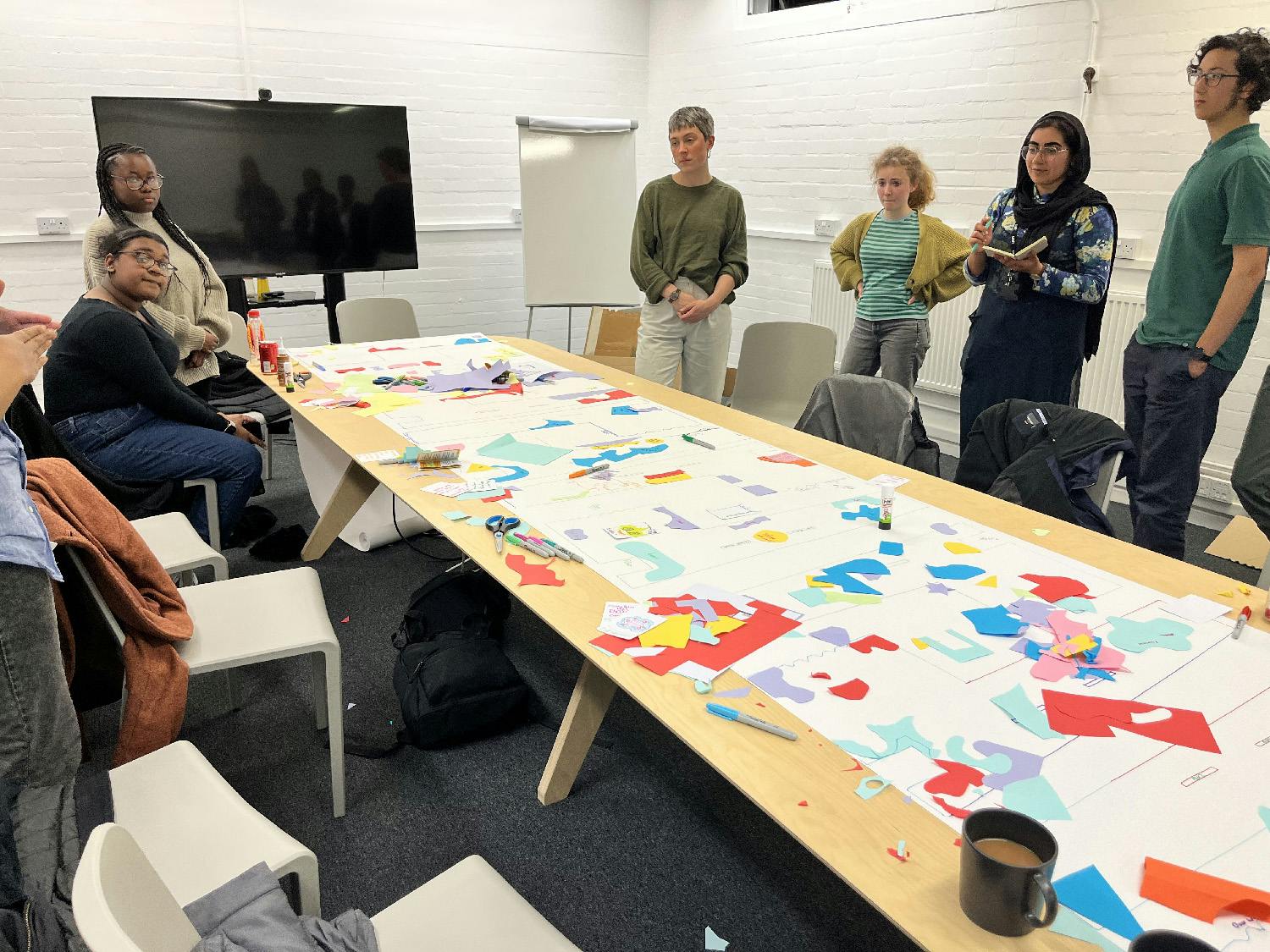
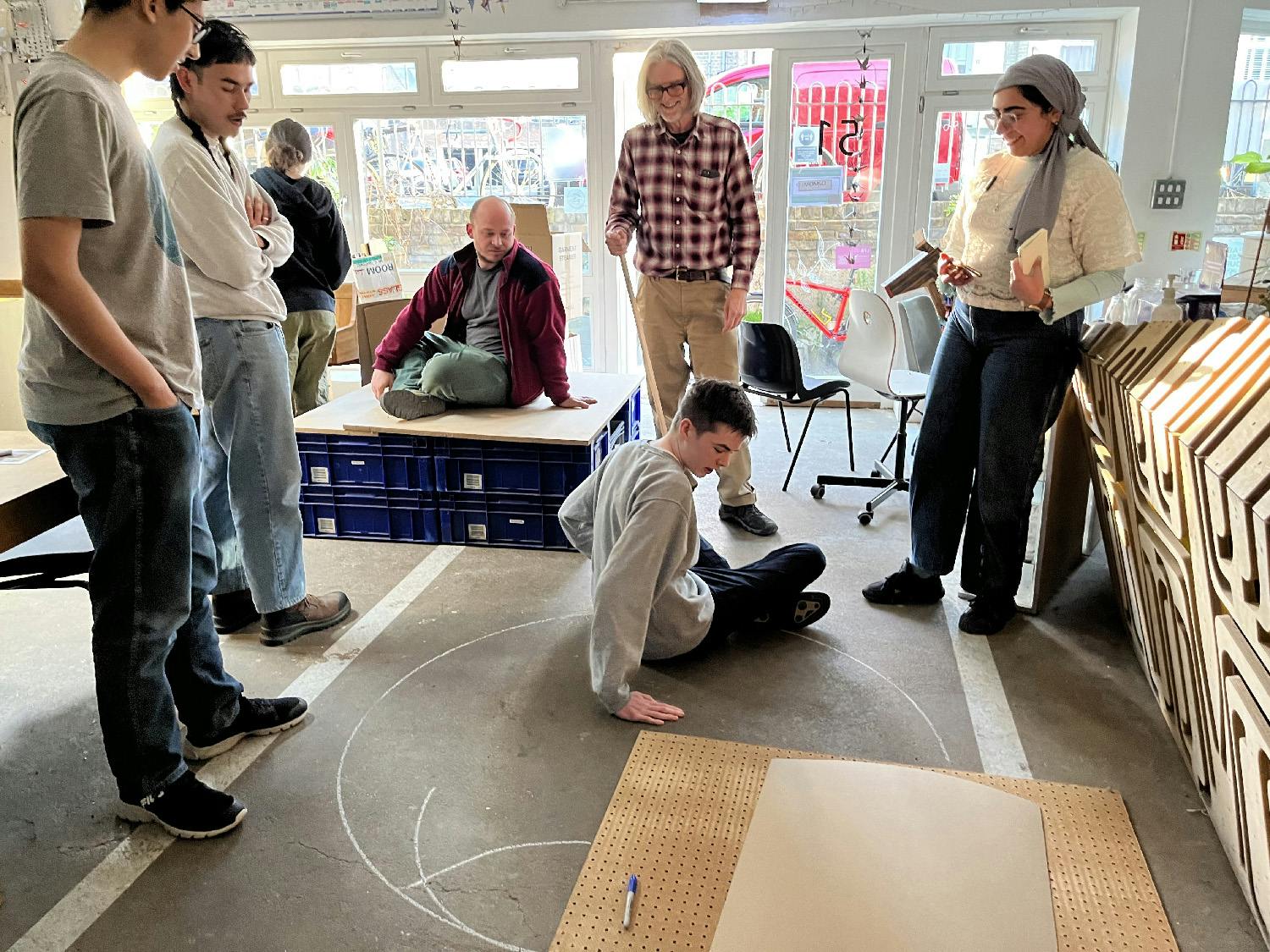
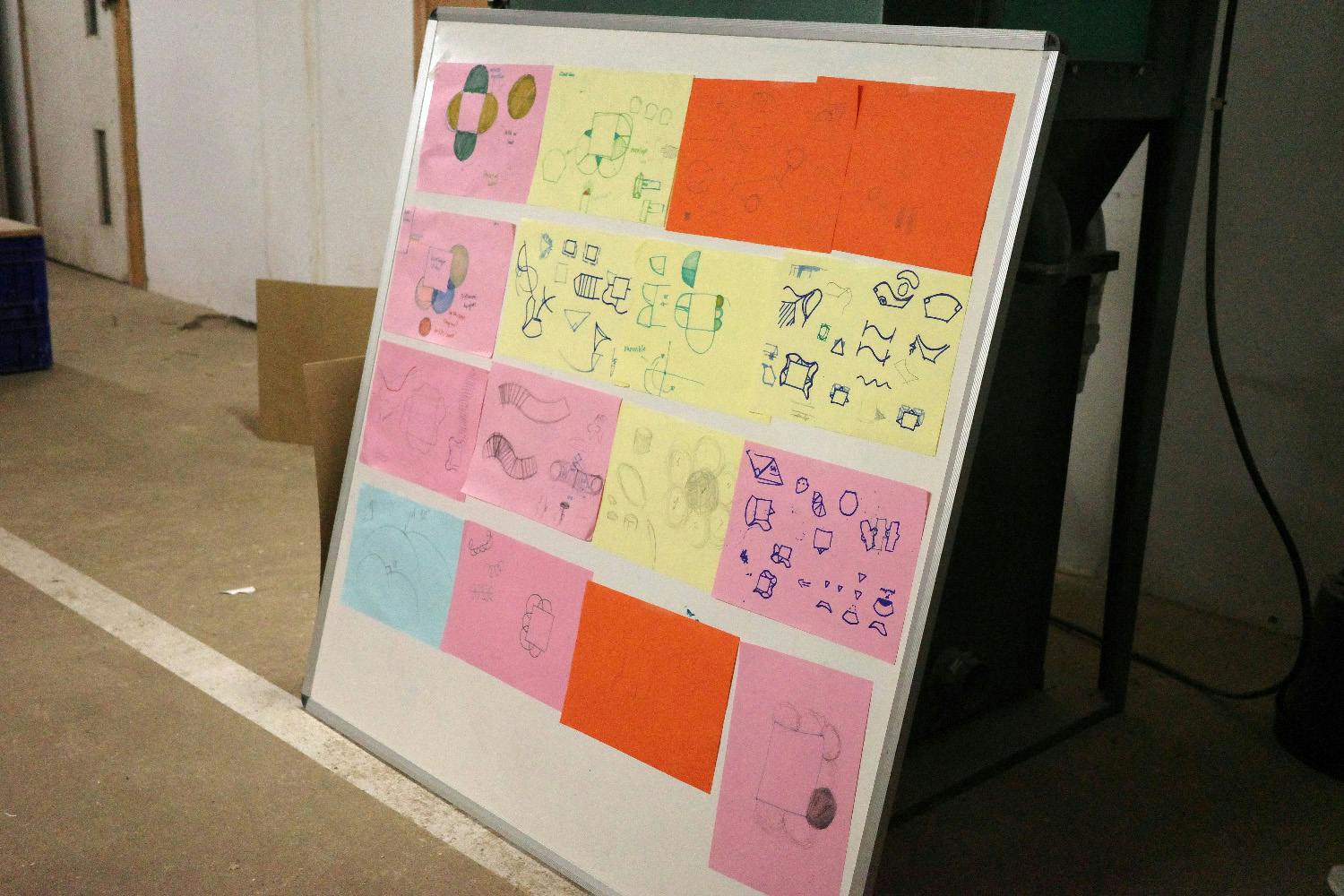
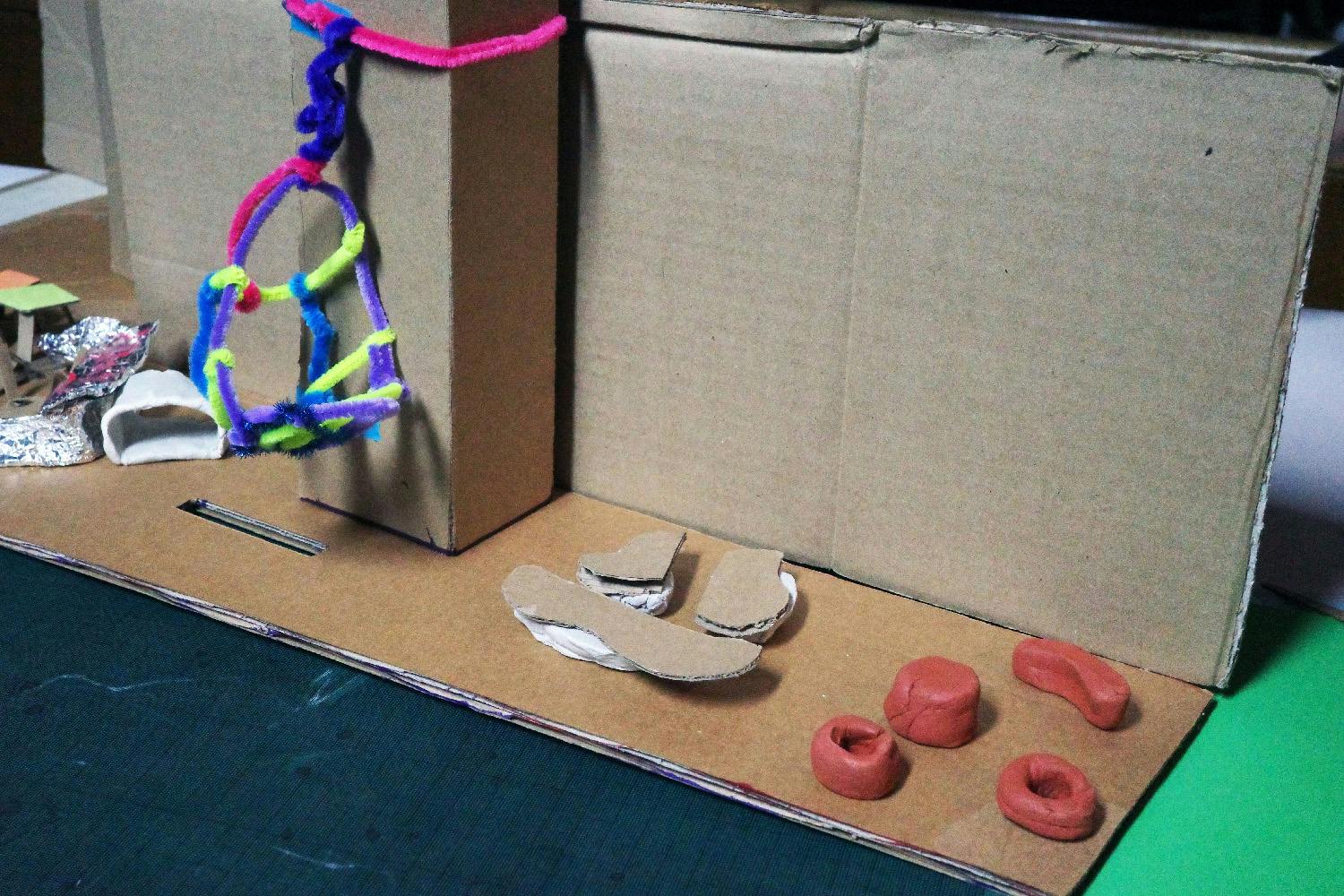
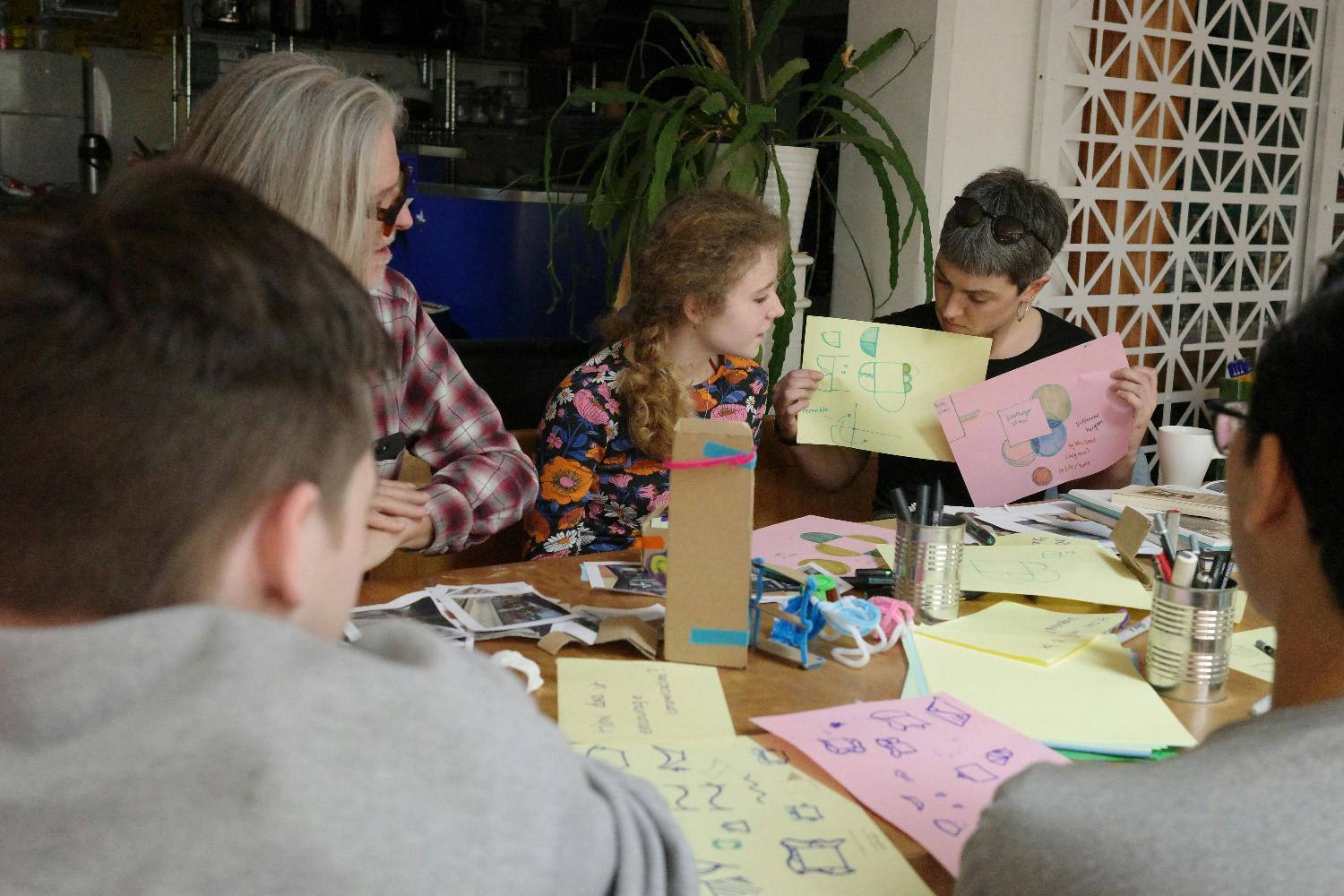
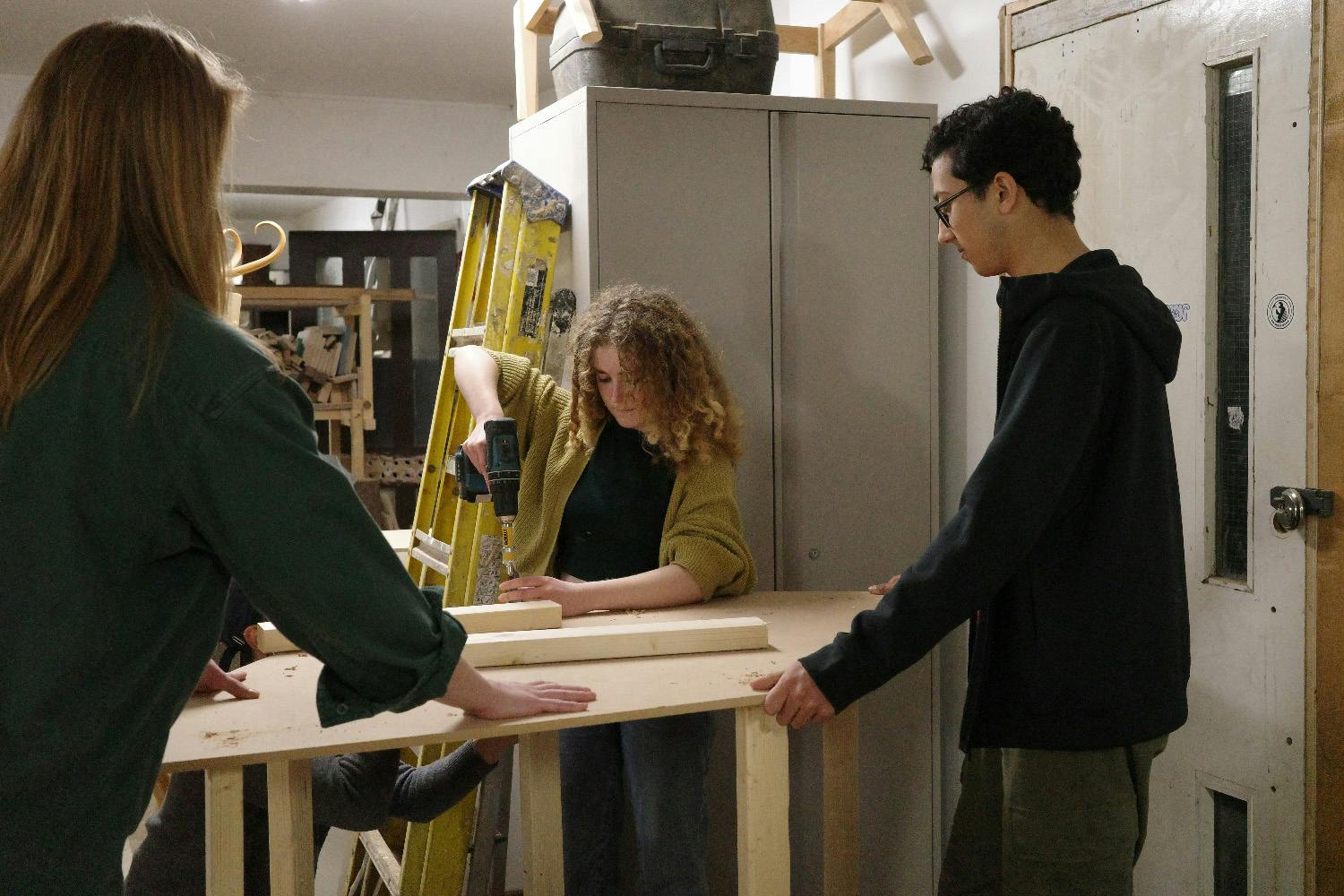
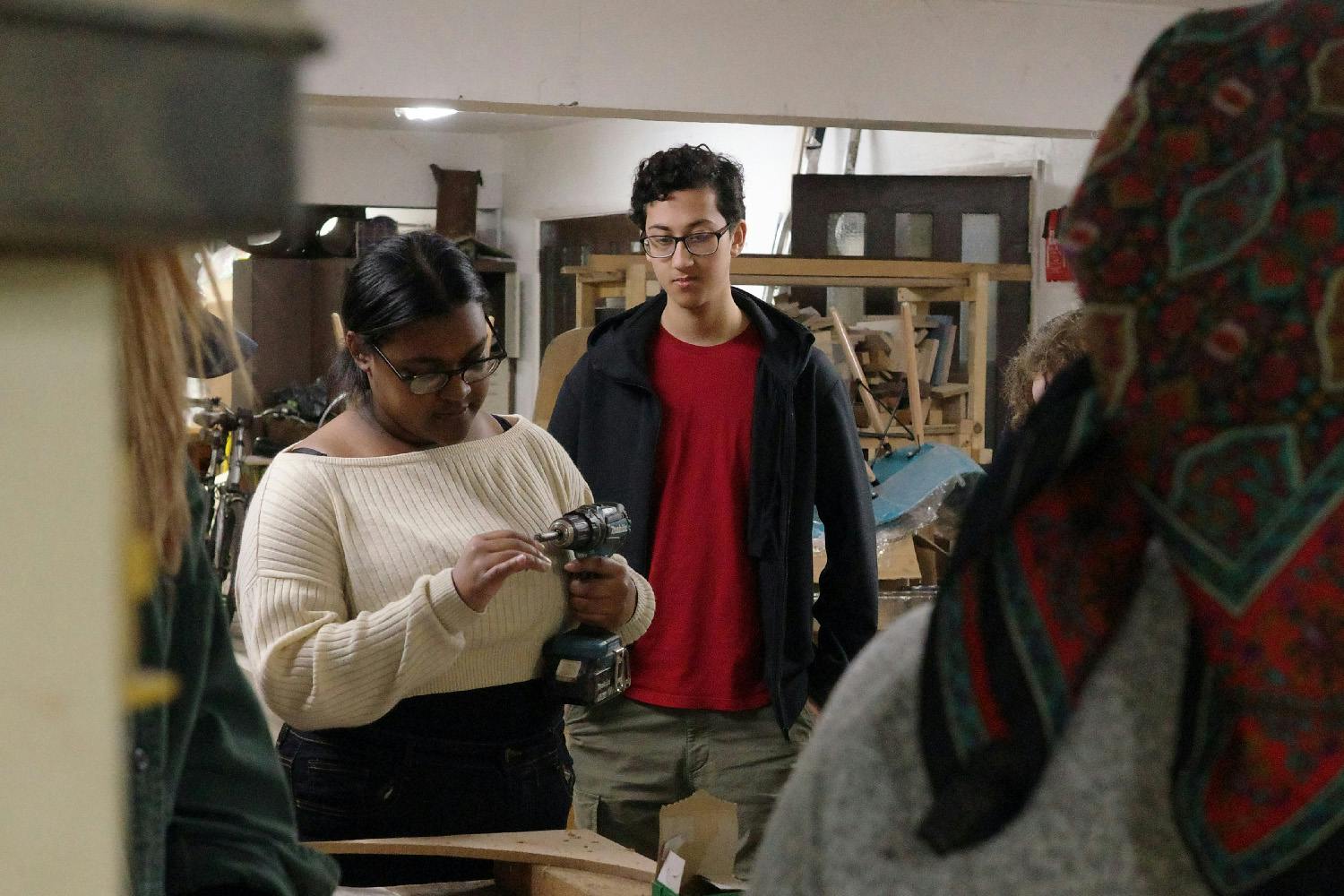
Over the 9 months we worked with 75 young people from across London to understand their way of seeing public space, and develop interventions with them to make it better for everyone. This culminated in a 4 week after school club where a group of 10 teenagers from Southwark designed new public seating, currently being fabricated for installation in Peckham.
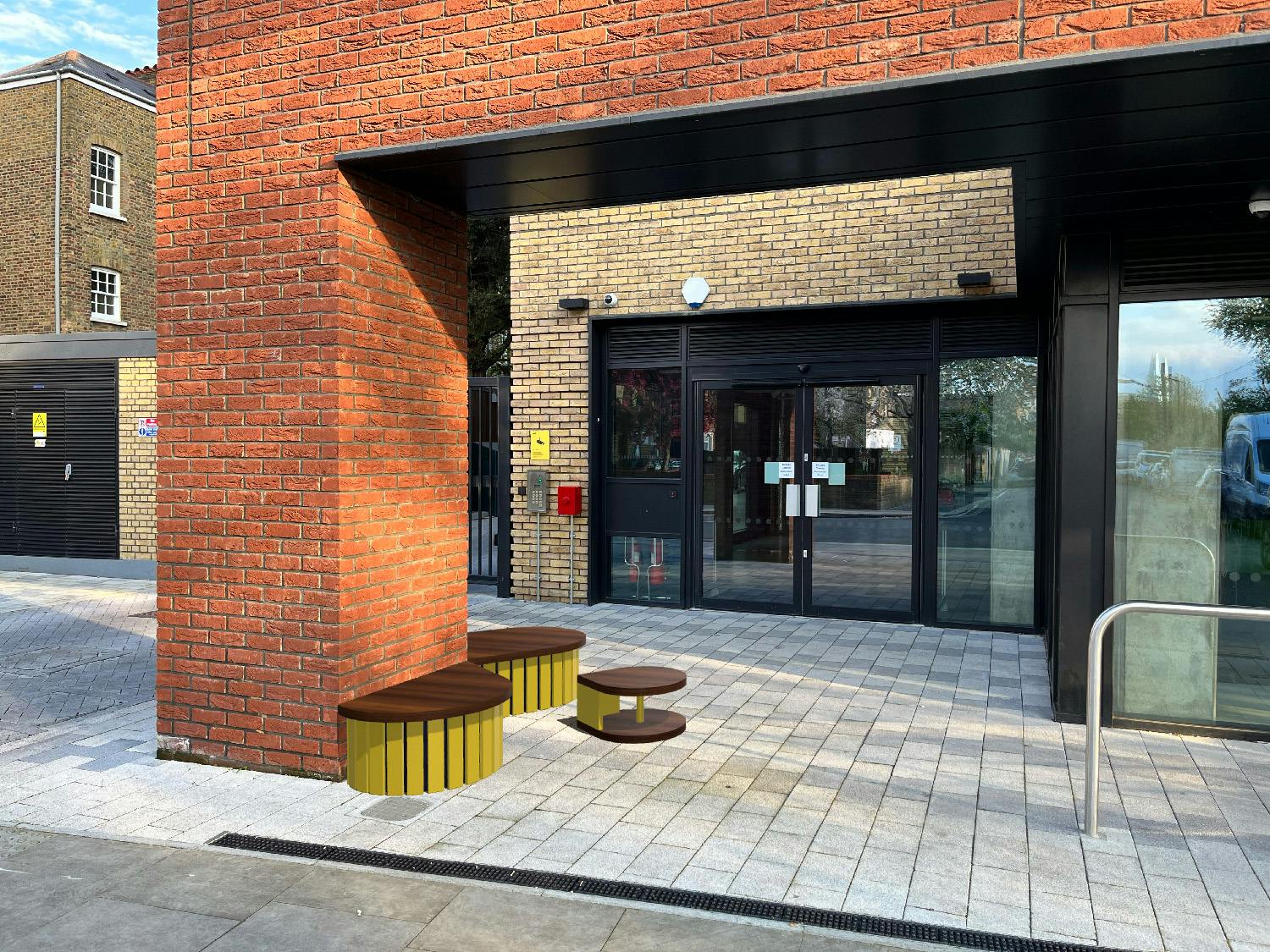
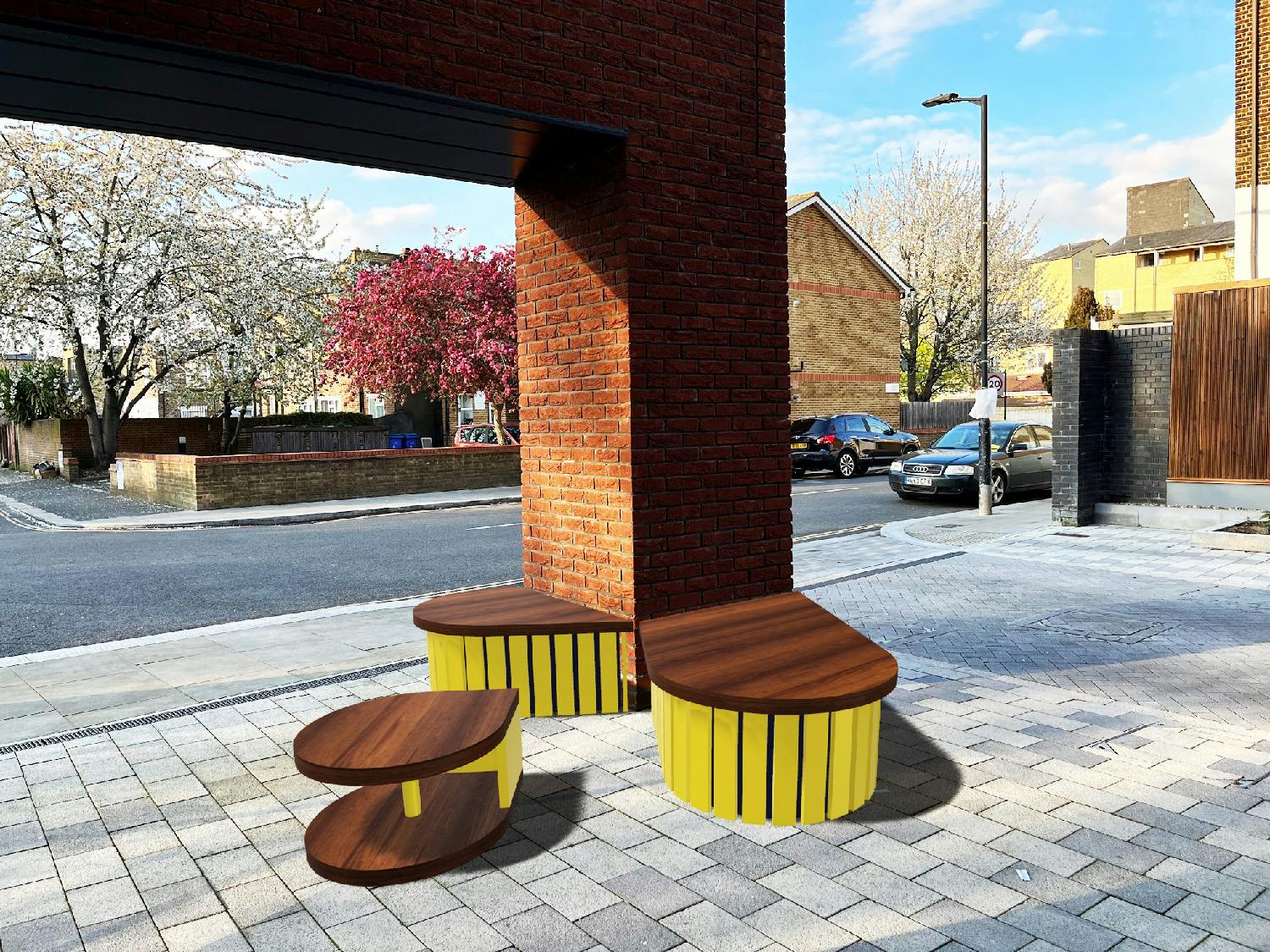
Our experience of running the workshops led to the creation of a pack of 6 hands-on design methods for involving young people in the design of public space. These are focussed on enabling participants to use embodied and tacit knowledge about their lived experience of the built environment to collaboratively create sketches, models and prototypes for the build environment. You can download the methods here.
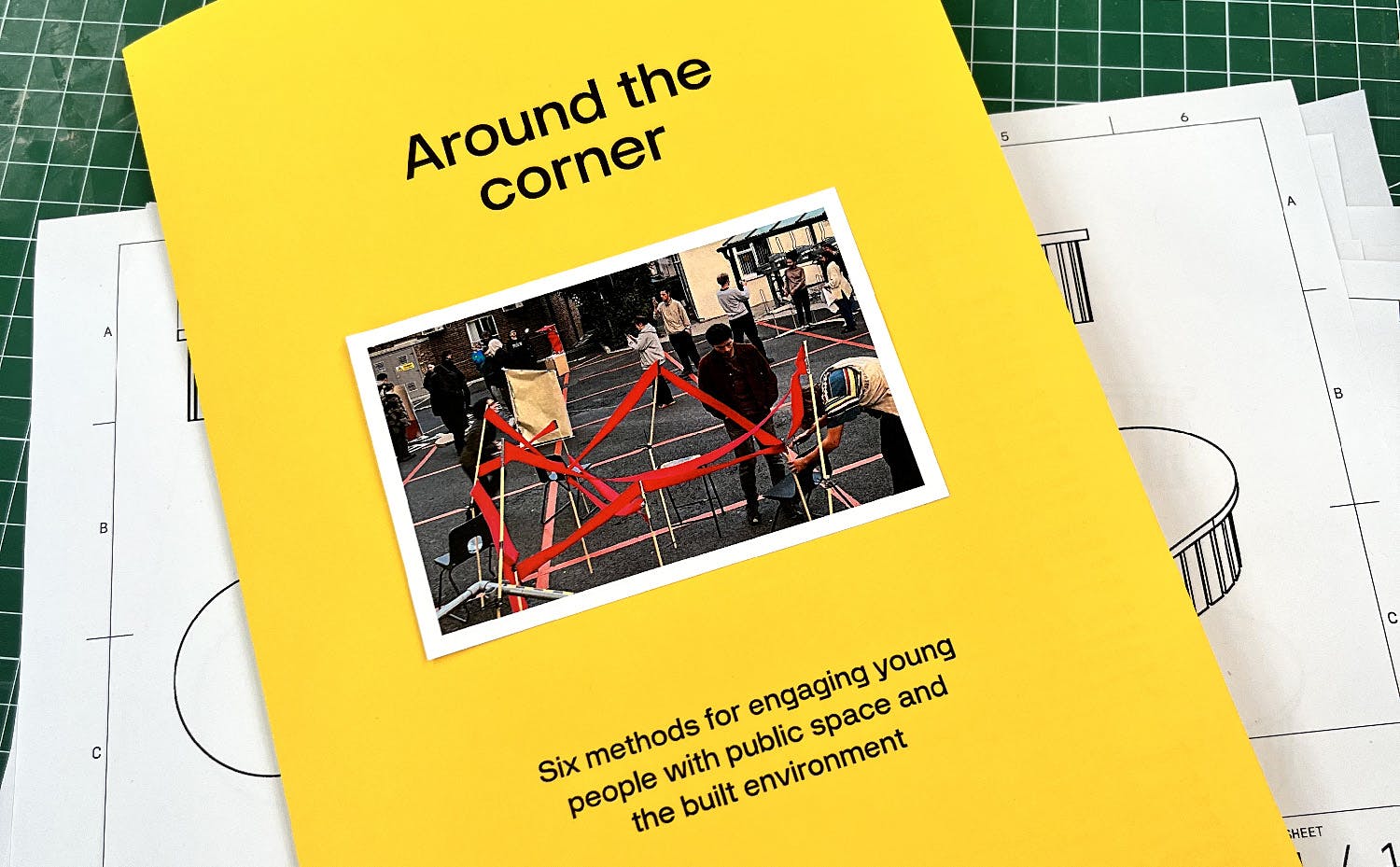
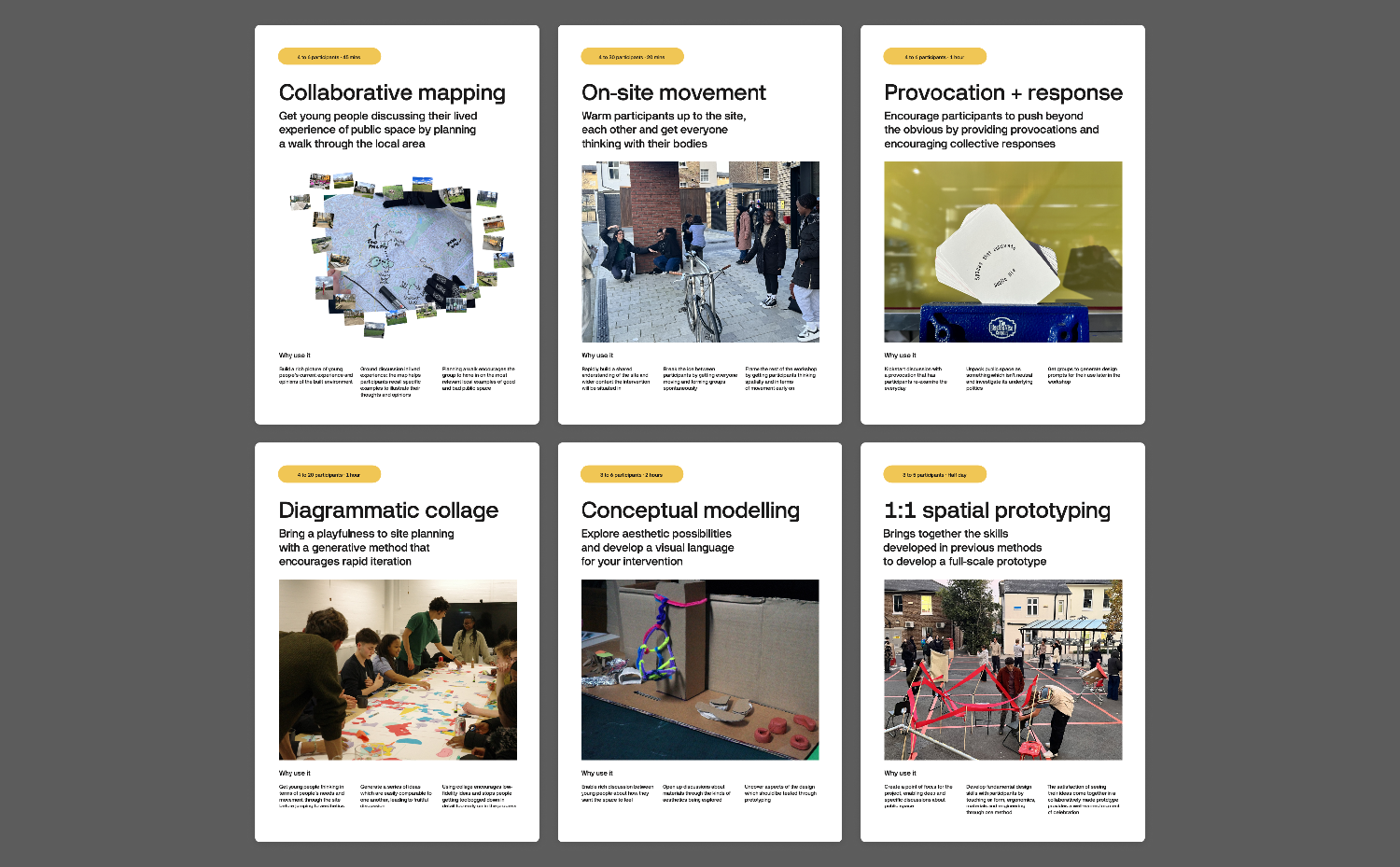
If you'd like to know more about the thinking and process for the project, you can read a short post-project conversation between myself and Sanaa below.
In conversation with Sanaa Asim
Teenagers in public space
From the criminalisation of teenagers mere presence to the increased demand of public space to generate profit, young people are increasingly alienated from the public realm. We begin by discussing this context, and how our project responds to it.
Sanaa
We were just talking about how the government recently announced a plan to prevent antisocial behaviour. They say they're doing that by investing money so that more youth clubs can open for longer… It makes me think about this impulse to criminalise teenager's presence in physical space, and about how physical context instructs young people about who they might or might not become. (2)
What we read about teenagers in public space is usually in the negative sense. This idea of if you let kids roam the streets freely, then they'll become good for nothing.
So I think our project is trying to look at it the other way. If they have that experience of public spaces that is positive, that has helped them build skills, and that they feel a sense of belonging to as opposed to alienation, then it can create that positive self future concept.
(2) More about how space affects teenager's sense of identity can be found in Kevin Lynch's seminal action research study. Lynch, K. (1977) Growing Up in Cities. Bernan Press(PA).
Victor
Youth clubs should be better funded and there should absolutely be things for young people to do. (3) But if that's all you invest in, it creates that implication that those are the only spaces in public that they should be allowed to exist in. Oh, they've got this specialised space, which means that they shouldn't be anywhere else.
During the project we looked at that research on skate parks (4), which dug into what young people really need from public space, and how skate parks fail to deliver that. And a lot of it was about having a sense of autonomy. Which can't be achieved through spaces that are specifically designed only for them, because they are by definition controlled and surveilled.
And so it's like that interesting tension of how do you design a public space that explicitly welcomes teenagers without making it like a space designed just for teenagers? It's made harder because society has this underlying bias that teenagers should not be seen in groups in public space. But that's also why it's an interesting question. And it's part of what we tried to get at by having teenagers design the space not just for themselves, but for everybody.
(3) Weale, S. (2020) ‘Youth services suffer 70% funding cut in less than a decade', The Guardian, 20 January. Available at: https://www.theguardian.com/society/2020/jan/20/youth-services-suffer-70-funding-cut-in-less-than-a-decade.
(4) Day, R. and Wager, F. (2010) ‘Parks, streets and “just empty space”: the local environmental experiences of children and young people in a Scottish study', Local Environment, 15(6), pp. 509–523. Available at: https://doi.org/10.1080/13549839.2010.487524.
Sanaa
I remember reading that teenagers create their own micro geographies to regain that sense of spatial control. (5) And it needs to be distanced from the adult world in a way. It's not like teenagers are banned from public spaces, but if you think about current places where people hang out, I'm thinking now about the Elephant and Castle regeneration area, it is very purchase based - buying food or drink, and so it's only for people with the financial means to buy things. (6) So even though it's an open public space because of the wider context, teenagers will still feel that sense of alienation. I dunno if you've ever felt awkward being in those sorts of spaces?
(5) Matthews, H., Limb, M. and Percy‐Smith, B. (1998) ‘Changing Worlds: the Microgeographies of Young Teenagers', Tijdschrift voor economische en sociale geografie, 89(2), pp. 193–202. Available at: https://doi.org/10.1111/1467-9663.00018.
(6) Day, R. and Wager, F. (2010) ‘Parks, streets and “just empty space”: the local environmental experiences of children and young people in a Scottish study', Local Environment, 15(6), pp. 509–523. Available at: https://doi.org/10.1080/13549839.2010.487524.
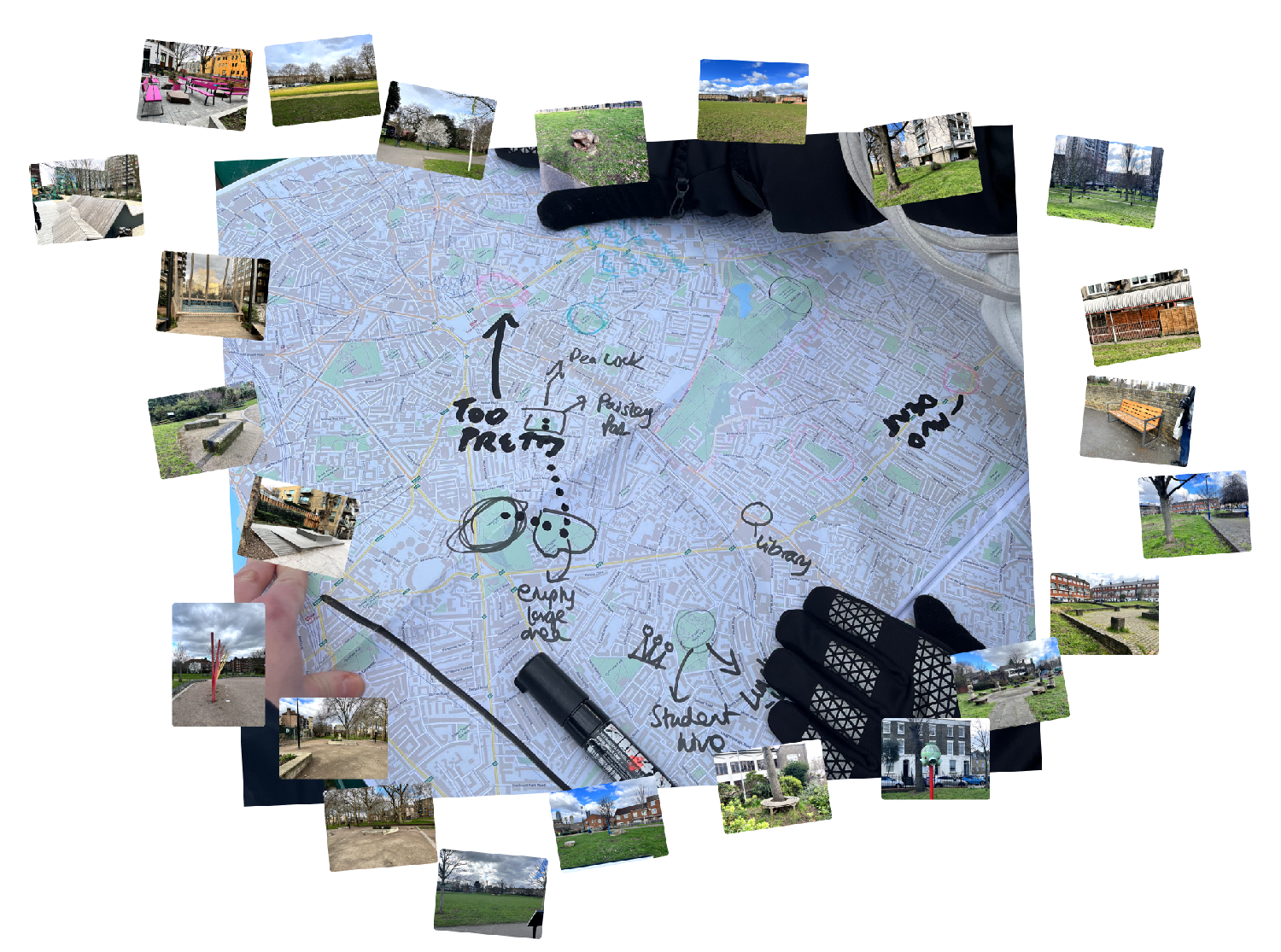
Victor
Yeah, definitely. Elephant and Castle is interesting though, because that was mentioned by one of the Youth Parliament when we ran the activity where they mapped out nearby good public spaces. And then when we visited it did feel like it would be more welcoming to teenagers than some of the other spaces that we saw.
In the design language used there were some bits that felt almost like an adventure playground. Like the net that you could lie down in, the rocks that you could climb on with water flowing between them. But crucially these weren't playground spaces, as they were open to all and on a different scale.
I feel like there is something about the fact that these places to rest engage your body in a different way from just like a regular bench…(7)
(7) Bingham-Hall, J. (2018) Engineers could learn a lot from dance when designing urban transport, Theatrum Mundi. Available at: https://theatrum-mundi.org/library/engineers-could-learn-a-lot-from-dance-when-designing-urban-transport/ (Accessed: 26 April 2023).
Sanaa
It's more playful, right? Like you said, because it's similar to kids' playground equipment, even though it's not explicitly.
Which is in contrast to one of the Youth Parliament telling us that her building was getting demolished in Elephant and Castle. They said something like: “gentrification is good when it comes to the spaces, but not when it comes to the buildings like the apartments”. I was just thinking that's so interesting because they also seem to enjoy this new space in Elephant and Castle. I mean, that's like a whole other research project and I'm sure there's people doing work on it, but I wonder how that displacement plays on teenagers' future self concepts.
Because for me, to an extent I can enjoy the design of the space. But then I also feel really weird because it's so new. And that newness reminds me of like, ah, it wasn't here all this time. So I wonder what it's like for the people who grew up here.
Victor
I think the way we framed our work to Youth Parliament - as ‘design' of public spaces - led to the way that our discussion landed in the end. These issues of displacement are still a design discussion, and maybe we'd have had a different conversation if we'd framed our work differently.
Between co-design and education
Our project sat in an awkward but fruitful place between co-design and pedagogy. We discuss different kinds of value - in particular what our participants found valuable from our workshops.
First, we looked at our project alongside the Charter for Co-design.
Charter for co-design (8)
Co-design needs to:
- involve collective thinking
- Design how partnerships are created
- Investigate and learn from existing social infrastructures
- Address power imbalances
- Provide skills to involve communities in decision-making
- Inclusive events and language
- Collective benefits
- Transparency and clarity
- Timing and resources
- A process that starts before any decisions are made and goes beyond generating proposals
(8) Sendra, P. (2023) ‘The ethics of co-design', Journal of Urban Design, pp. 1–19. Available at: https://doi.org/10.1080/13574809.2023.2171856.
Victor
Do you think we met this charter?
Sanaa
Honestly, I feel like we ticked off a lot off
Victor
I think we ticked off a lot, but I also think there's some interesting tension there - because we framed it as an afterschool club where you contribute towards a defined outcome - designing public seating.
I do think that was part of the value that the young people got from it. In the workshops we saw that they gained a lot from working with Callum and Phil and Jazz as experienced design practitioners. In particular, being able to bounce ideas off those three and have them help develop them further. In the end there was a different kind of value in that for participants, compared to us, for example, all working out what the structure was gonna be together. I think framing it as an afterschool club makes it slightly different from something framed as a co-design project. But not necessarily in a bad way…
Sanaa
And I think giving it the name After School Club helped people understand it…
Victor
Yeah. By piggybacking off an established format.
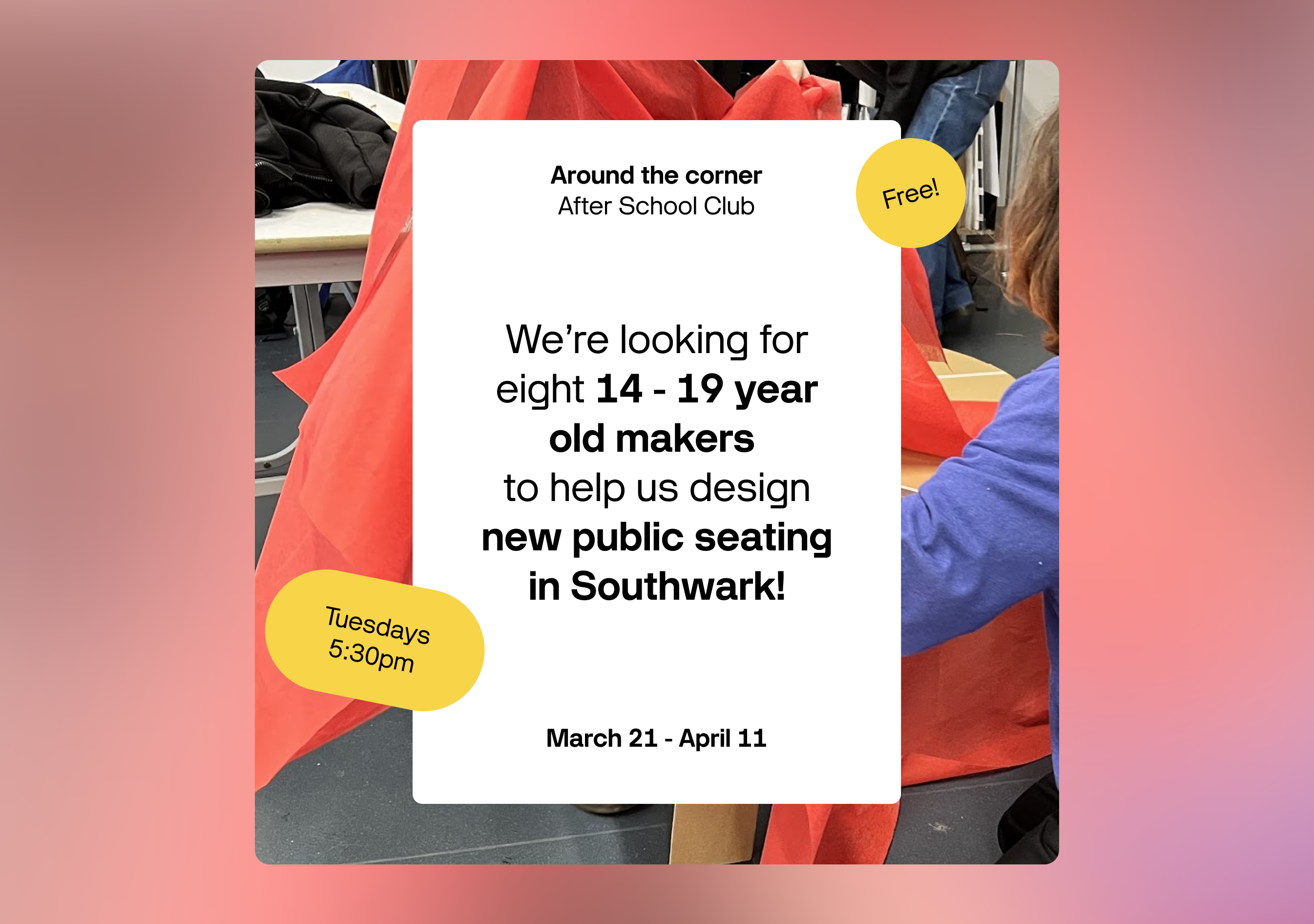
Next, we looked at our project alongside the ladder of co-production (9), which was created by members of the National Co-production Advisory Group (NCAG) based on the ladder of citizen participation, created by Arnstein in the late 60s (10).
Ladder of co-production
Doing with - in an equal and reciprocial partnership
- Co-production
- Co-design
Doing for - engaging and involving people
- Engagement
- Consultation
- Infroming
Doing to - trying to fix people who are passive recipients of service
- Educating
- Coersion
(9) Think Local Act Personal (2021) Ladder of co-production, www.thinklocalactpersonal.org.uk. Available at: https://www.thinklocalactpersonal.org.uk/Latest/Co-production-The-ladder-of-co-production/.
(10) Arnstein, S.R. (1969) ‘A Ladder Of Citizen Participation', Journal of the American Institute of Planners, 35(4), pp. 216–224. Available at: https://doi.org/10.1080/01944366908977225.
Sanaa
I saw this ladder referenced in the GLA's plan for a better city for children.(11) They talk about the need for more co-design processes and children moving up the ladder of consultation. But, what Sendra critiques is it's quite a narrow framing, because good projects don't stay in one rung of the ladder - they move up and down and that's OK.
(11) Greater London Authority (2020) Making London Child Friendly: Designing for children and young people, london.gov.uk. Available at: https://www.london.gov.uk/sites/default/files/ggbd_making_london_child-friendly.pdf (Accessed: 20 June 2023).
Victor
Yeah. Because the latter is a hierarchy, it explicitly says the stuff at the top is good and the stuff at the bottom is bad. It describes education here as trying to fix people who are passive recipients of a service. But there's a different kind of education, I think, and I dunno if I have the words to express this, but…one of the young people, for example, said that they learned how to fend for themselves (socially) as part of the workshops. And that was the most valuable thing they got from it. And being in that situation with people you've not met before is a form of education. But it's not didactic.
Sanaa
Is it experience?
Victor
[laughs] Yeah. I guess it's experience, but do you think that's different from education?
Sanaa
It's hands on. I also think that's kind of what that embodied experience is - of being present there and navigating those social situations. I feel like the word educating implies we are teaching her. But really she figured it out for herself. It was a learning process for her.
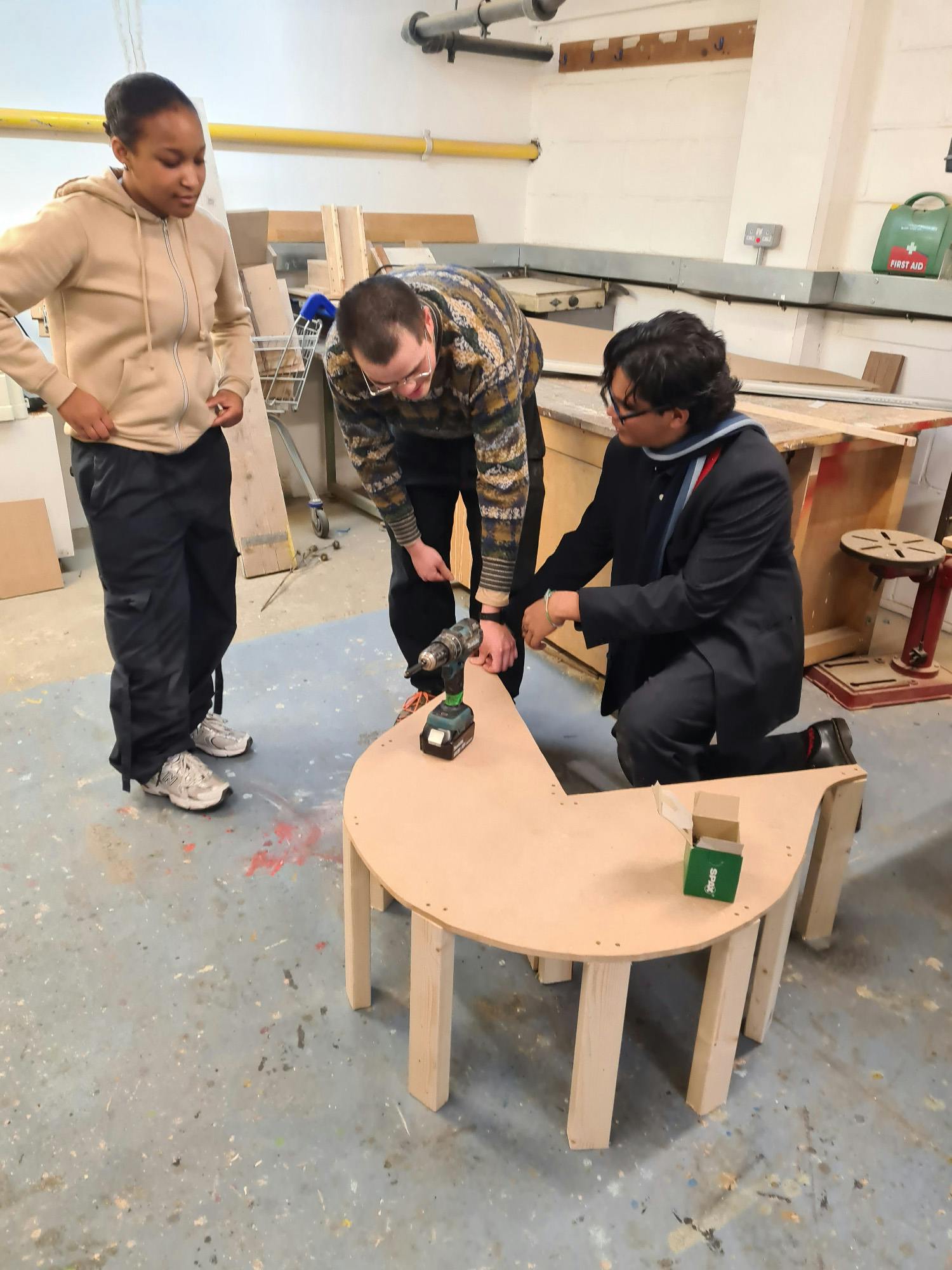
Victor
But then there's also that running joke we had, the best feedback we got from the kids was that they learned how to use power drills. That's an explicit skill that we taught them, but I think there's a deeper reason why they found that valuable to do with feeling like you can make things… (12)
(12) More about this can be found in: Sennett, R. (2009) The craftsman. London: Penguin Books.
Sanaa
Yeah. It opened a whole world of possibility now that they know how to use a drill. Because before it seemed like a very special skill that only certain people are able to have. But when they actually realise how easy it is, it's like, oh - so I can do this, which means I can now build furniture.
Victor
But that's a form of education. Which I think we'd say is a kind of value that participants got from the workshop. But that value is not acknowledged in the ladder of participation.
Our findings and reflections
Our workshops uncovered a set of aesthetics and forms preferred by young people for their percieved ability to encourage public interaction. We discuss how this aligns with other's research, and end by looking at what we'd do differently next time.
Victor
One other thing I noticed throughout our workshops…so for example, with the Southwark Youth Parliament, the bench that emerged triumphant in King of the Benches was that quite traditional looking round one, around the tree. And in that interview on Radio Four (13) where they were talking about public spaces for teenage girls they said that what comes up a lot is round seating, which works better for groups than straight benches. And that mirrors our workshops, where these organic forms came up again and again - where people can sit in relation to others in a multitude of ways. And it makes me think that there's some sort of common forms or aesthetics that create spaces that are intrinsically more welcoming to teenagers. Although it's probably really a political question of whether we want to design spaces that are inclusive to teenagers…
(13) ‘Today' (2023). BBC Radio 4. Available at: https://learningonscreen.ac.uk/ondemand/index.php/prog/3C0E19B5?bcast=138880585 (Accessed: 20 June 2023)
Sanaa
I mean our workshops were framed as giving teenagers more spatial agency. But I guess at least for me the ultimate goal would be it doesn't need to be given - teenagers just have more spatial agency by virtue of the spaces.
I wonder if that ‘giving' part of it affects how their interventions end up manifesting because they're like, ah, we've been given a crumb of control over the environment. Let's make sure they didn't regret this...
Victor
That feels like a trap that's maybe much more acute when you're working with teenagers, but which any co-designed project could fall into.
Sanaa
Yeah, definitely. I think that's the case when you're working with any marginalised or underrepresented groups. Because I feel like the opportunity would feel even more like, an opportunity, rather than due process. But remind me what you were saying about the language of spaces…
Victor
It was about those fluid organic forms, which lead to group situations, I think. And then one of the other things that always comes up is that teenage girls, who are particularly underserved by public space, love swings.(14)
(14) Lange, A. (2021) Teen Girls Need Better Public Spaces to Hang Out, www.bloomberg.com. Available at: https://www.bloomberg.com/news/features/2021-05-28/we-need-more-public-space-for-teen-girls.
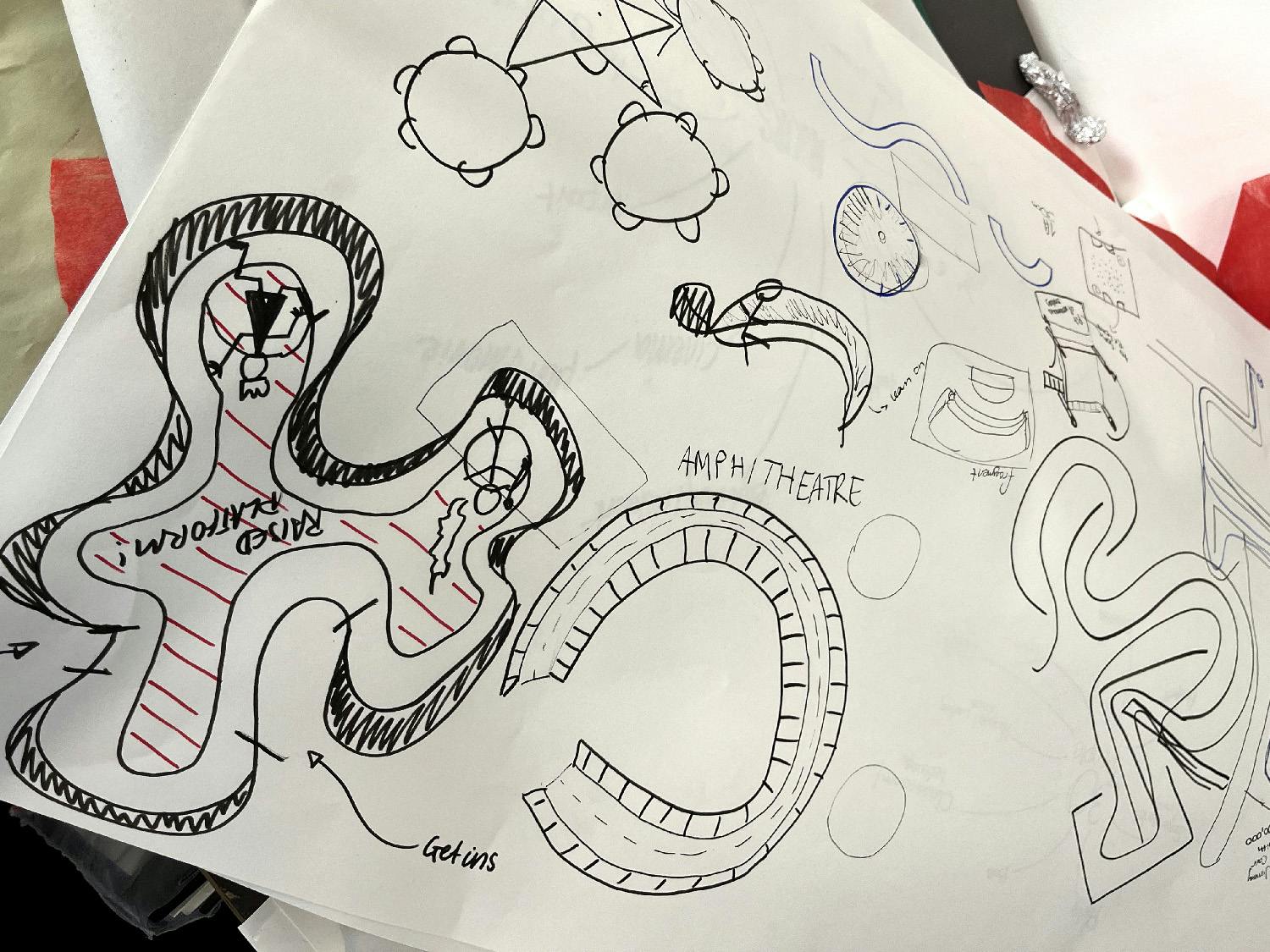
Sanaa
You're at an age where you can't use the swings in a child's playground because it's frowned upon and people will think you're taking away a resource and well, they're just too small!
Victor
Yeah. That sense of movement came up in our workshops as well. Like L and E designed those hanging chairs. I wonder whether that's another thing that you don't see in the public realm which could signal that teenagers are actually welcome.
Sanaa
Definitely - I think lots of these places are purposefully designed to not be welcoming, but then it's also so easy to fall into the trap of designing for teenagers. If you're just using the design language, rather than involving them in the process, it can so easily just become designing a space for them. It raises the question again of how to give them true spatial agency.
Victor
Definitely. Is there anything you would do differently if we were going to do the whole project again?
Sanaa
Hmm. I feel like there could be. For the first workshop I think it could've been… it just could've been more interesting! I like diagrammatic collage and this way of thinking about space. And again, I think that was a really nice way to ease into the hands on making parts. But I think we could've presented the prompts in a better way. I think we could have gone a bit more into the context of the surrounding area…
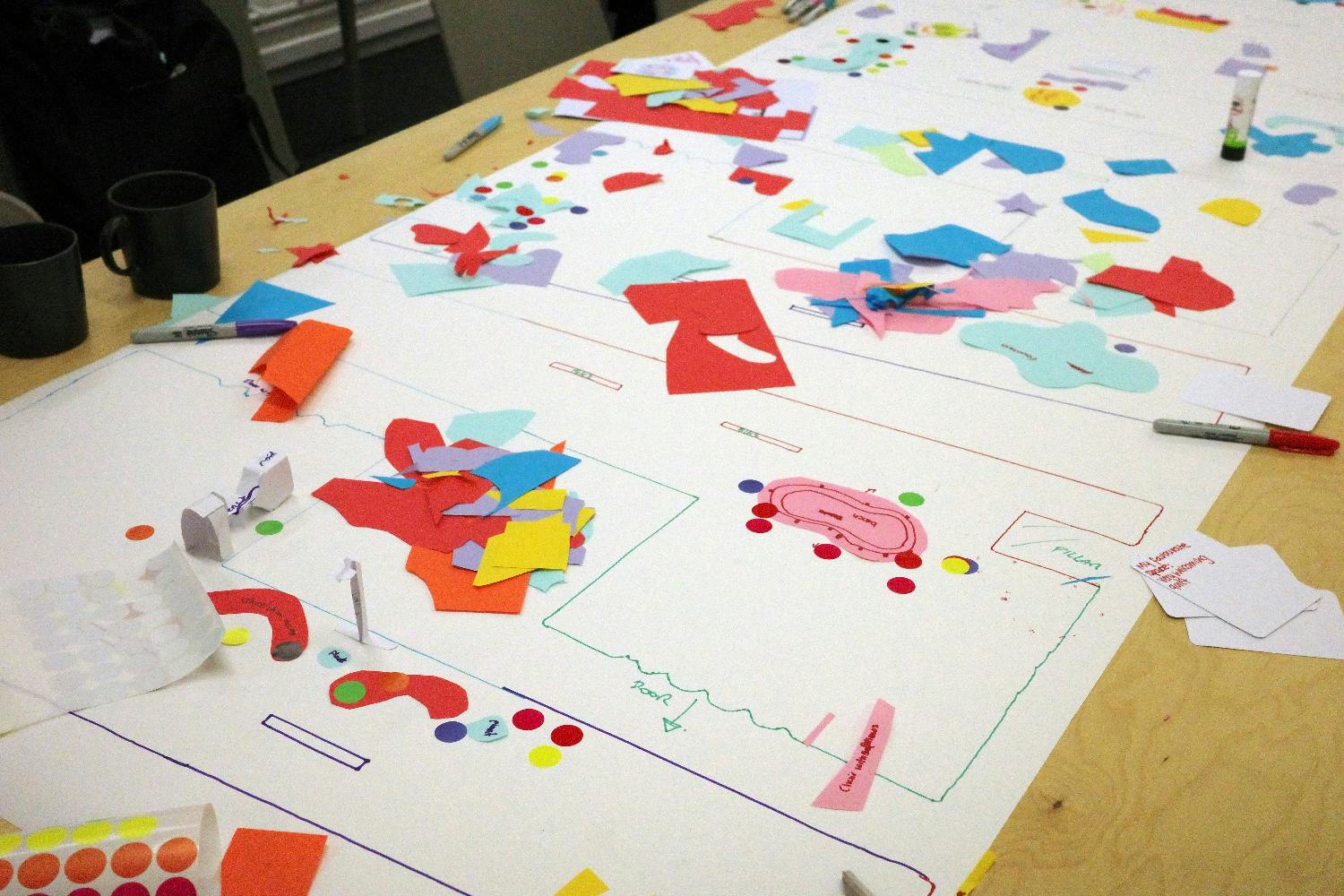
Victor
I think on reflection, even if we binned off that whole first workshop and did like a walk around packham with the young people to look at existing public spaces we'd have got to a similar place… We definitely we tried to cram too much into that first workshop
Sanaa
Yeah. We were nervous as well
Victor
Yeah! If I was going to do it again I'd just relax a bit.
Sanaa
[laughing] It was very high tension
Victor
…but if we had just done a walk in that first workshop I reckon we would've got the same outcome. And I think probably that would've been really valuable for everyone too. You get so much from side discussions with people during that kind of thing. And I think we would've got a lot of understanding from being in situ.
Sanaa
I mean, we had a 15 minute walk to the venue anyway, so maybe stopping at some bits on the way and that sort of thing. I liked the diagrammatic college, but I think a walk beforehand would've sparked a bit more ideas that are based on their experience of those places rather than these imagined characters.
Victor
Yeah definitely. That's the other thing - how much you get from doing the stuff in the real space. I think if we'd been able to run the four workshops in the actual space they were designing for, even just doing the one-to-one prototyping in the space, would've had a big impact. Responding to the real situation is really engaging for participants.
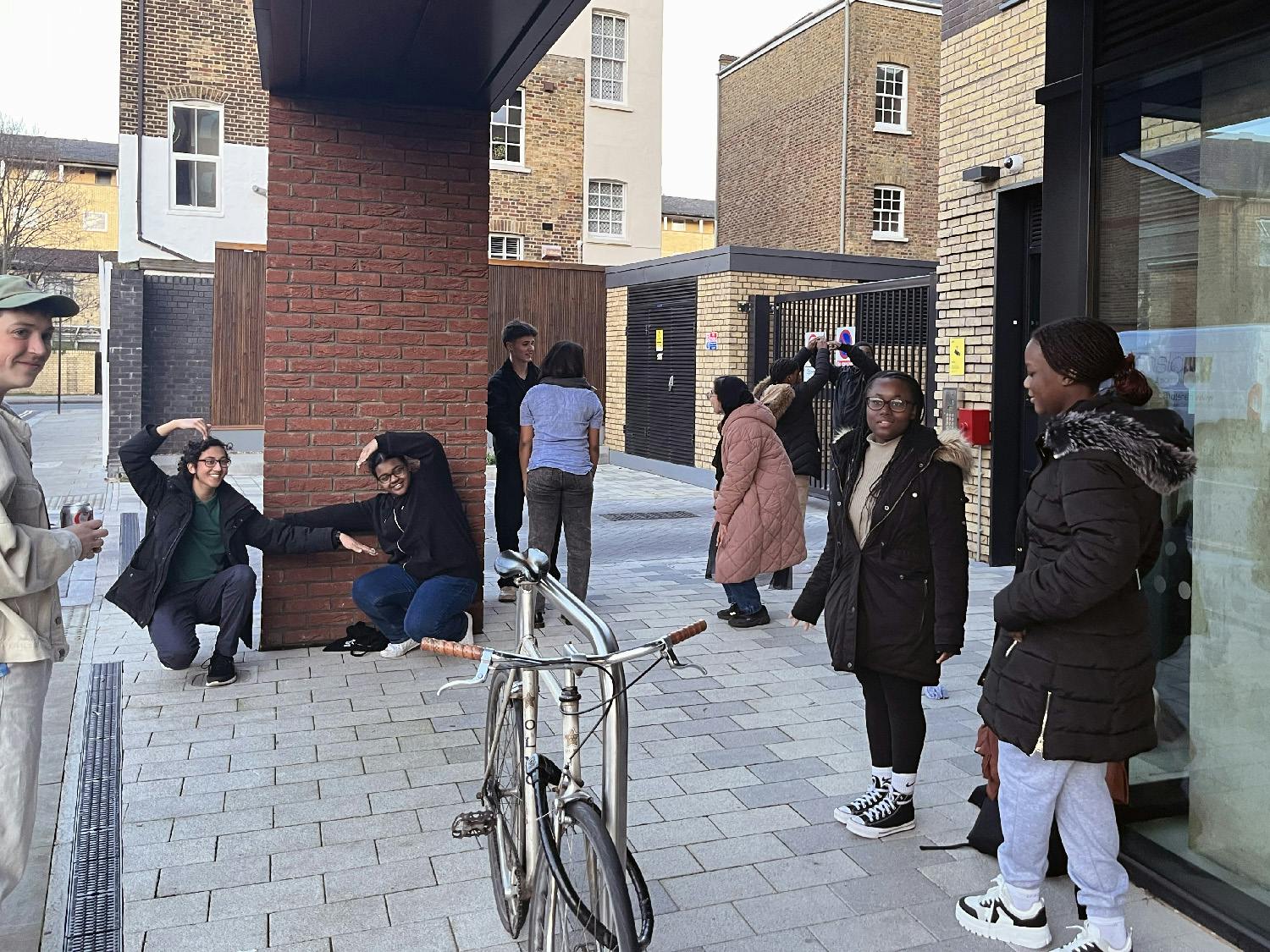
Sanaa
They wouldn't have to rely on their memories and imagination of that space. It makes me think of how, you know, when we started this, we had an imagined notion of what teenagers were like. We were conscious of that, which is why we did this whole thing! But it was there, and in a way we still have that.
It's a bit based on our experience with the workshop, but it's still an imagination. And unless we're in constant work and constant collaboration with teenagers, it's going to still be an imagined notion.
You know, during the first workshop, so many people suggested plants. Why? Because they have an assumption that plants just make everything look nicer. It's not necessarily true, but because they had that fixed memory of the space, oh, there's not much greenery around, even though it's next to a park.
Victor
It becomes abstract - about abstract ideas
Sanaa
Yeah, exactly. It's about getting them out of thinking of the imaginary.
Victor
Which I think is what we've always tried to do with the methods, especially one-to-one prototyping.
Sanaa
Yeah. Or rather, I wouldn't say it's completely trying to get them out of the imaginary. That has its value too, because it's where their self-concept is as well. That's an abstract thing, in constant play with the environment they're in.
The relationship with teenagers in space, or really anyone, in public space is always that back and forth, right? And what we are trying to do is alter how much control and agency they have in that through our workshop.
So that they become places of possibility and control and action and freedom rather than, ah, this is a place that isn't made for me.
Ultimately to create a public realm that works better for young people, we need not only better designed spaces, but also political and social change. Teenagers' presence should be welcomed as part of a diverse and inclusive public realm, without the unfair automatic association with anti-social behaviour.
Therefore, although one-off community projects such as Around the Corner cannot be the whole solution to the problem, they can be effective in advocating for a public realm that is welcoming to all. Each intervention designed by a group of young people has the chance to alter perceptions of young people in public space, as well as creating a pocket of the public realm that is more welcoming to all.
Using methods that rely on embodied and tacit knowledge, rather than specialist skills such as drawing or model making, offers an accessible route into art and design for participants. This is particularly important in light of the decline of people from a working class background in the arts (15). However, it’ll always remain a challenge to make sure workshops are appealing to as broad an audience as possible. This is the difficult work that is worth doing.
(15) Tapper, J. (2022) Huge decline of working class people in the arts reflects fall in wider society, the Guardian. Available at: https://www.theguardian.com/culture/2022/dec/10/huge-decline-working-class-people-arts-reflects-society.